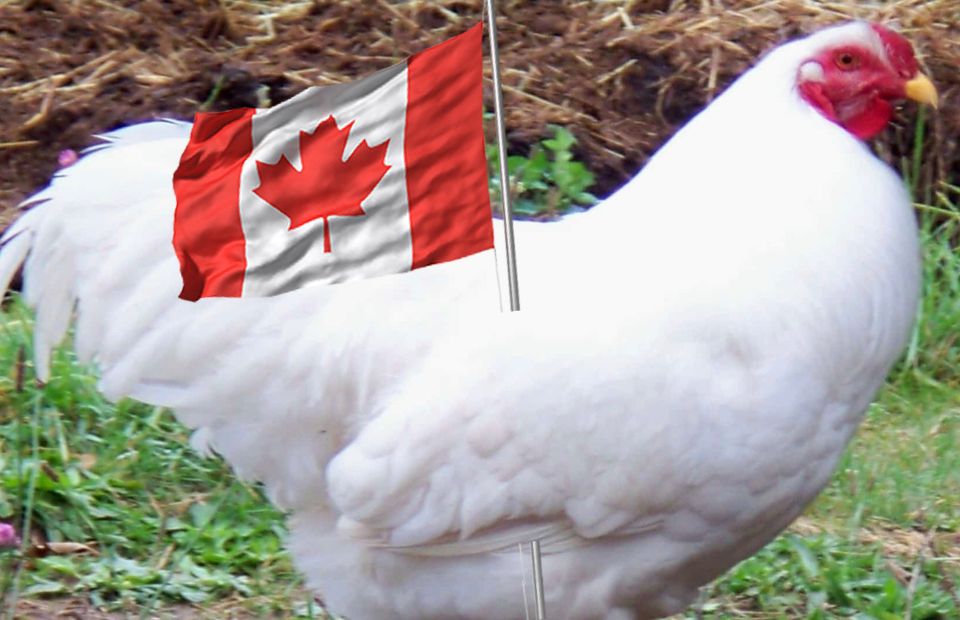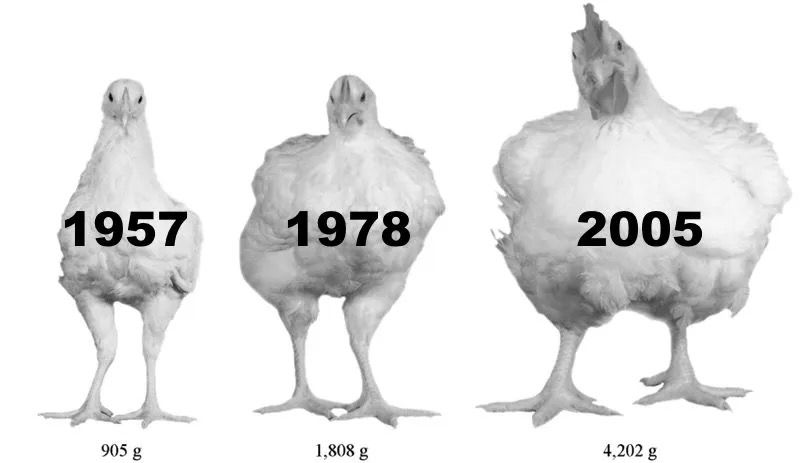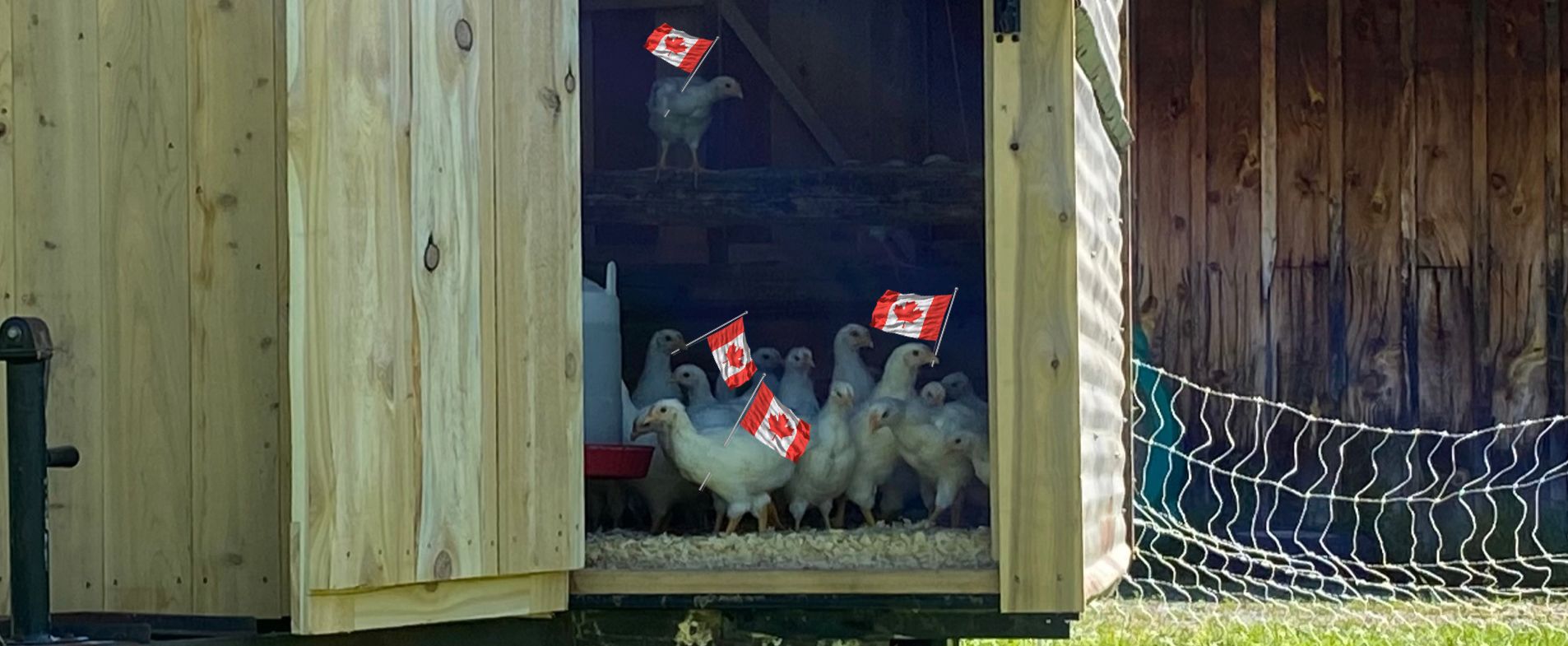Happy Chantecler Day!

Okay, so maybe today (July 1, 2022) isn't National Chantecler Day, but it is Canada Day and the chantecler is uniquely Canadian.
I might have posted about the white chantecler breed of chicken sooner, but I'm really no expert, I'm simply a patriotic chicken hobbyist who thinks it's cool that we have a Canadian chicken. Many people have worked hard for decades to save this iconic, heritage breed. To a large extent, however, chanteclers saved themselves from industrial food production's mono-chicken focus.
Over the years, people in Canada and northern US states have poured enthusiasm, dollars, and time into raising chanteclers, bringing them to poultry shows, and trading experience and genetics. Some documented extensively, and others, like Heather Newman and JoAnn McCall, whom our flock is indebted to, have worked to promote the breed by growing food for their local market and even doing research (as Heather has, with the Ecological Farmers Association of Ontario) to improve the economics of heritage breed chicken. It is the feed to meat conversion efficiency that gives the hybrid offspring of proprietary, commercial strains of cornish and plymouth rock chickens their monopoly on our dinner tables. No chicken that can reproduce itself comes close.
Chicken meat goes industrial
This amazing meat making machine and its monopoly only came to be in the 1950's. With post-war families rapidly exiting the hassle of producing food on small farms and homesteads, the race to the most meat per dollar was on. No heritage bird stood a chance, and their numbers dropped precipitously.
If I was a heritage chicken, I'd say these industrial chickens were cheating. They can't reproduce themselves - they require a plymouth rock hen and a cornish rooster. And not just any plymouth and cornish pair... they must be of the genetics that have been curated for decades, owned by a few multinational companies - you can only buy the offspring. Three months is about the extent of their lifespan. Let to live longer, their legs collapse under their weight and their organs cannot keep up. Most are processed between 4 weeks ("cornish game hen") and 7 weeks of age. We are growing some this year for ourselves and locals, and they will be processed at 9 weeks, when they will be quite large; over 5 lbs processed weight.

Canadian Hipster
Back to the chantecler - this chicken is Canadian through and through. It's unassuming, rather plain, tough as nails, practical, productive, winter-hardy. Like people Canadians, there are very few of them. Their aesthetic may be poetic simplicity to me, but going to a poultry show with a white chantecler is like dressing up a fashion model in jeans and a white T-shirt. Further, the patriotic sentiment applies only to Canadians and their winter hardiness is of little interest to those in warmer climes.
It's The Tragically Hip of chicken!
For completeness: There are two chantecler chickens, both Canadian, in the Standard of Perfection, the recognized authority on poultry breeds published by the American Poultry Association since 1874. My interest is in the White Chantecler because it is the original and has a great story behind it. The Partridge Chantecler has beautiful, dark coloration that was developed in Alberta. It was developed separately a decade or so later, but targeted the standard of the while chantecler minus the color.
Their Story
The white chantecler's history is well documented, including on Wikipedia, where there are interesting photos of early Chantecler chickens from 1926, just a few years after the breed was recognized in the Standard of Perfection, in 1921.
- Developed by Brother Wilfrid Châtelain at the Abbey of Notre-Dame du Lac in Oka, Quebec.
- Brother Wilfred started in 1907 with Dark Cornishes, White Leghorns, Rhode Island Reds, White Plymouth Rocks and White Wyandottes.
- In 1918, the white chantecler was introduced to the public after more than a decade of selective breeding. Three years later, in 1921, the white chantecler became the first chicken of Canadian origin to be added to the APA's Standard of Perfection.
- In 1979 its extinction was publicized. Wait, what?
"I'm not dead yet!"
While the mainstream lost sight of the chantecler and announced its extinction with the 1979 death of a rooster at the University of Saskatchewan thought to be the last, battalions of industrious white foragers were quietly pecking away in some appreciative, scattered barnyards.
After all, the Chantecler was a Canadian chicken. It wasn't meant to be on the catwalk. It was valued by farmsteads that appreciated this low-maintenance chicken that could do all the chicken stuff: forage well, grow large for meat, lay lots of eggs, and easily tolerate a northern winter.
And so, I say, the chantecler saved itself, without pomp and circumstance, by being its awesome self, thank-you very much.

Thanks for reading. Send me an email anytime. You can peruse other musings of this wannabe farmer from the homepage, or click on my picture, below.